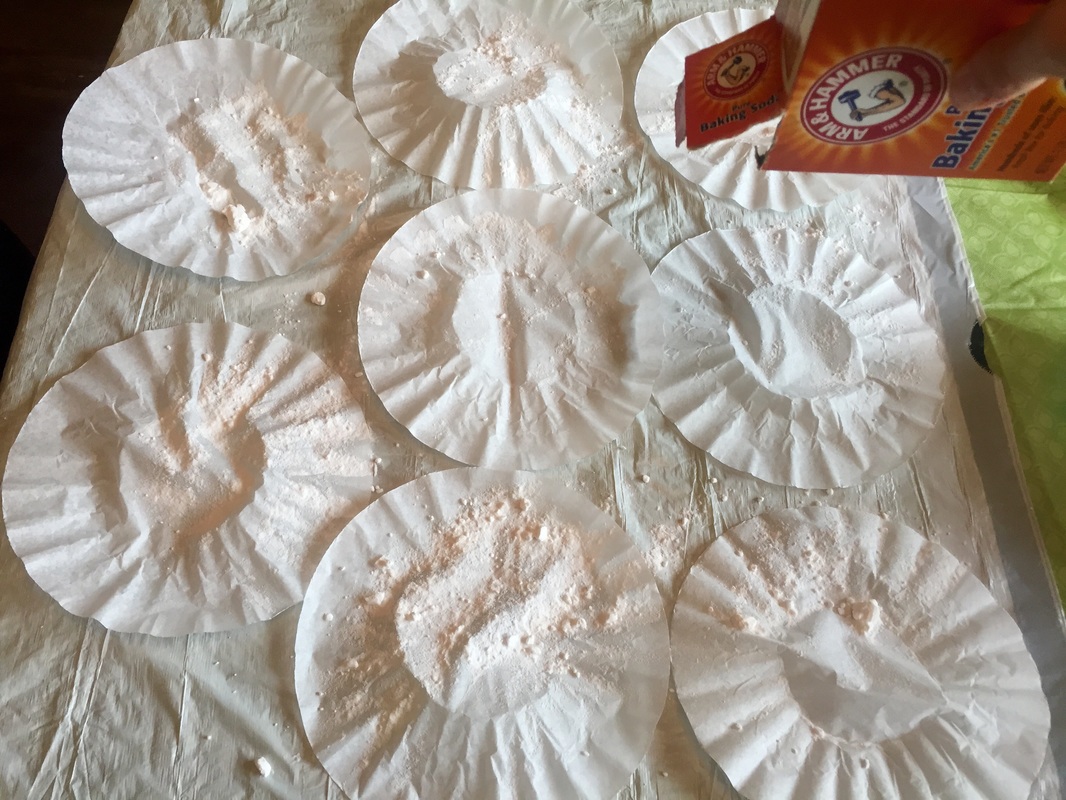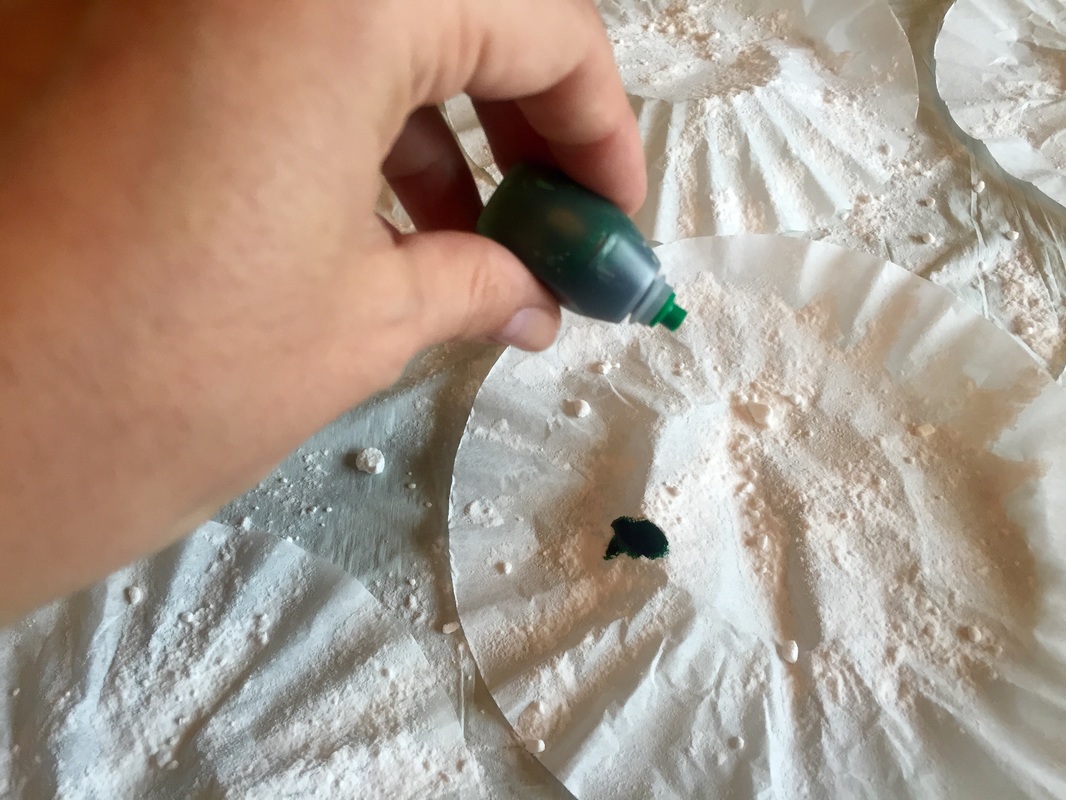| 3. Put a few drops of food coloring in various places on each coffee filter. (On a separate note, I didn't have any red food coloring so I opened up a package of fruit punch kool aid and sprinkled it instead. If I do this again I will only use different colors of kool aid because the smell of the kool aid masked the smell of vinegar and worked just as well or better than food coloring.) |
We hope you had fun! Check out the science explained below to teach your child about the reasoning behind why this experiment/art works!
In this experiment, the fizz is produced by a chemical reaction between baking soda and vinegar. Baking soda and vinegar react, and one of the products of the reaction is carbon dioxide gas. This gas forms bubbles that are surrounded by the liquid. The laundry detergent makes the bubbles last longer, and a foam is produced. The volume of the gas produced and trapped in the foam is much greater than the glass can hold, so some of it spills over the top of the glass.
Baking soda is sodium bicarbonate. Vinegar contains acetic acid dissolved in water. Sodium barcarbonate reacts with most acids. The products of the reaction with vinegar are carbon dioxide gas, sodium acetate, and water.
The reaction of sodium bicarbonate to form carbon dioxide gas is the basis of its use as a levening agent in baking. Cakes are solid foams. The foam is produced when bubbles of carbon dioxide from the reaction of sodium bicarbonate are trapped in the batter. As the cake bakes, the batter dries, and the trapped bubbles of carbon dioxide form the holes in the cake.









 RSS Feed
RSS Feed


